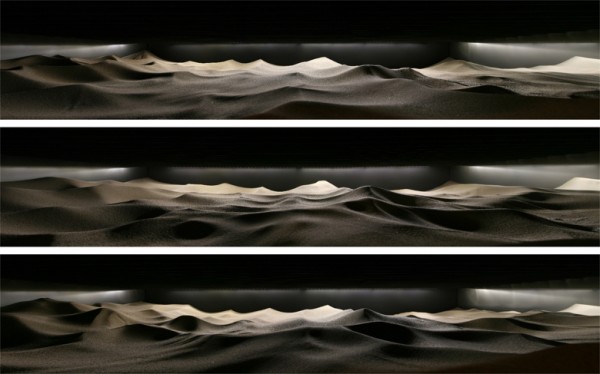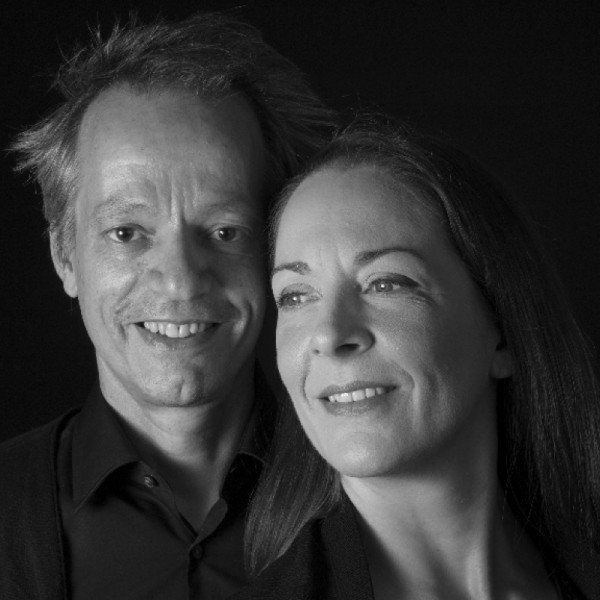Sandbox
Sandbox, 2009, W 245 x D 122 x H 176 cm, materials: wood, lacquer, metal, 50 fans, 200 kg. sand, electronics
Sandbox
The research of Driessens & Verstappen focuses on the possibilities that physical, chemical and computer algorithms can offer for the development of image generating processes. In these processes they aim for complexity and diversity in the conviction that chance, self-organisation and evolution order and transform reality. An important source of inspiration at this are the self-organising processes in our surroundings: the complex dynamics of all kinds of natural processes and the genetic-evolutionary system of organic life that continuously creates new and original forms.
Sand and wind have expressive features, that can be experienced in its purest form in a desert landscape. The wind has free play with the loose sand that creates a vivid spectacle of ever changing formations. Sandbox is a diorama in which a sand bed is continuously transformed by means of wind. This process is visible for the audience through a small window. There is no intention of simulating a down-scaled version of an existing desert, but to build a generative system in which concrete materials like sand and wind are the shaping elements. By locking up these elements in a box an imaginary sight is created, a glimpse of a world where another climate prevails.
Inside the box the basic facilities are installed: a thick layer of sea sand, the fans, electronics and lighting. In between the sand and the fans, a strip ceiling is hiding the fans from view. The fans are switched on and off individually by a custom designed algorithm. One can see rushing particles and sand drifts generating typical slopes. Now and then dust devils or avalanches will appear, or lees where lightweight particles seem to dance over the surface.






